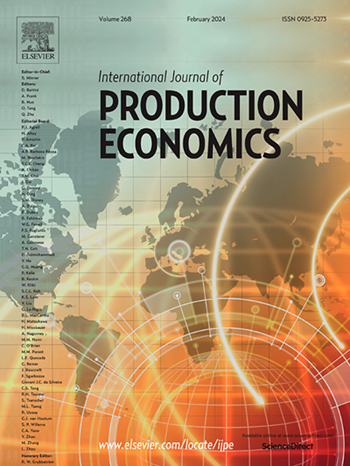审视制造业企业的社会不负责任:对社交媒体新闻的眼动追踪研究
IF 9.8
1区 工程技术
Q1 ENGINEERING, INDUSTRIAL
引用次数: 0
摘要
本研究旨在通过实验研究消费者对社交媒体上有关制造业生产的环境企业社会责任新闻的反应,重点关注消费者行为决策背后的认知机制。利用CSI、消费者行为和社交媒体危机沟通方面的现有文献,本研究采用眼动追踪方法,结合2 x 2 x 2的实验小插图设计,选取了325名英国成年人作为全国代表性样本。结果表明,证据的存在和CSI事件中较高程度的伤害不会引起更强的负面反应。相反,该研究强调了社交媒体上的从众行为,表明批评言论显著地推动了负面反应。证据、危害、负面口碑评论(口碑)之间的显著三向互动表明,当CSI事件是基于证据且危害较低时,与CSI新闻相关的批评性评论引发的负面口碑要比支持性评论大得多。眼动追踪结果表明,集体意见显著调节了视觉注意与消极反应水平的关系。具体来说,当顾客遇到批评而不是支持的评论时,更高的视觉注意力会减少负面反应。本研究通过揭示塑造公众对CSI新闻认知的机制做出了显著贡献。它为公司提供了宝贵的见解,以减轻CSI新闻的升级,最大限度地减少潜在的声誉损害,并加强管理CSI相关风险的准备。此外,在基于场景的实验框架内整合眼动追踪技术代表了一种新的方法进步,丰富了对社交媒体危机背景下消费者行为的理解。本文章由计算机程序翻译,如有差异,请以英文原文为准。
Examining corporate social irresponsibility in manufacturing: An eye-tracking study of social media news
This research aims to experimentally examine how consumers respond to environmental corporate social irresponsibility (CSI) news about manufacturing production on social media, focusing on the cognitive mechanisms underlying consumers’ behaviour decisions. Drawing on existing literature in CSI, consumer behaviour, and social media crisis communication, this study employs an eye-tracking methodology in conjunction with a 2 x 2 x 2 experimental vignette design with a nationally representative sample of 325 UK adults. Results reveal that the presence of evidence and a higher degree of harm in CSI events do not evoke stronger negative responses. Instead, the study highlights conformity behaviour on social media, showing that critical comments significantly drive negative responses. A significant three-way interaction between evidence, harmfulness, commentary on negative word-of-mouth (WoM) demonstrates that when a CSI event is evidence-based with low harm, critical comments accompanying CSI news provoke substantially greater negative WoM than supportive comments. The eye-tracking results indicate that collective opinions significantly moderated the relationship between visual attention and negative response levels. Specifically, higher visual attention leads to reduced negative responses when customers encounter critical rather than supportive comments. This study makes notable contributions by unwrapping the mechanisms shaping public perceptions of CSI news. It provides valuable insights for companies to mitigate the escalation of CSI news, minimise potential reputational harm, and enhance preparedness in managing CSI-related risks. Additionally, the integration of eye-tracking technology within a scenario-based experimental framework represents a novel methodological advancement, enriching the understanding of consumer behaviour in the context of social media crises.
求助全文
通过发布文献求助,成功后即可免费获取论文全文。
去求助
来源期刊
CiteScore
21.40
自引率
7.50%
发文量
266
审稿时长
52 days
期刊介绍:
The International Journal of Production Economics focuses on the interface between engineering and management. It covers all aspects of manufacturing and process industries, as well as production in general. The journal is interdisciplinary, considering activities throughout the product life cycle and material flow cycle. It aims to disseminate knowledge for improving industrial practice and strengthening the theoretical base for decision making. The journal serves as a forum for exchanging ideas and presenting new developments in theory and application, combining academic standards with practical value for industrial applications.

 求助内容:
求助内容: 应助结果提醒方式:
应助结果提醒方式:


